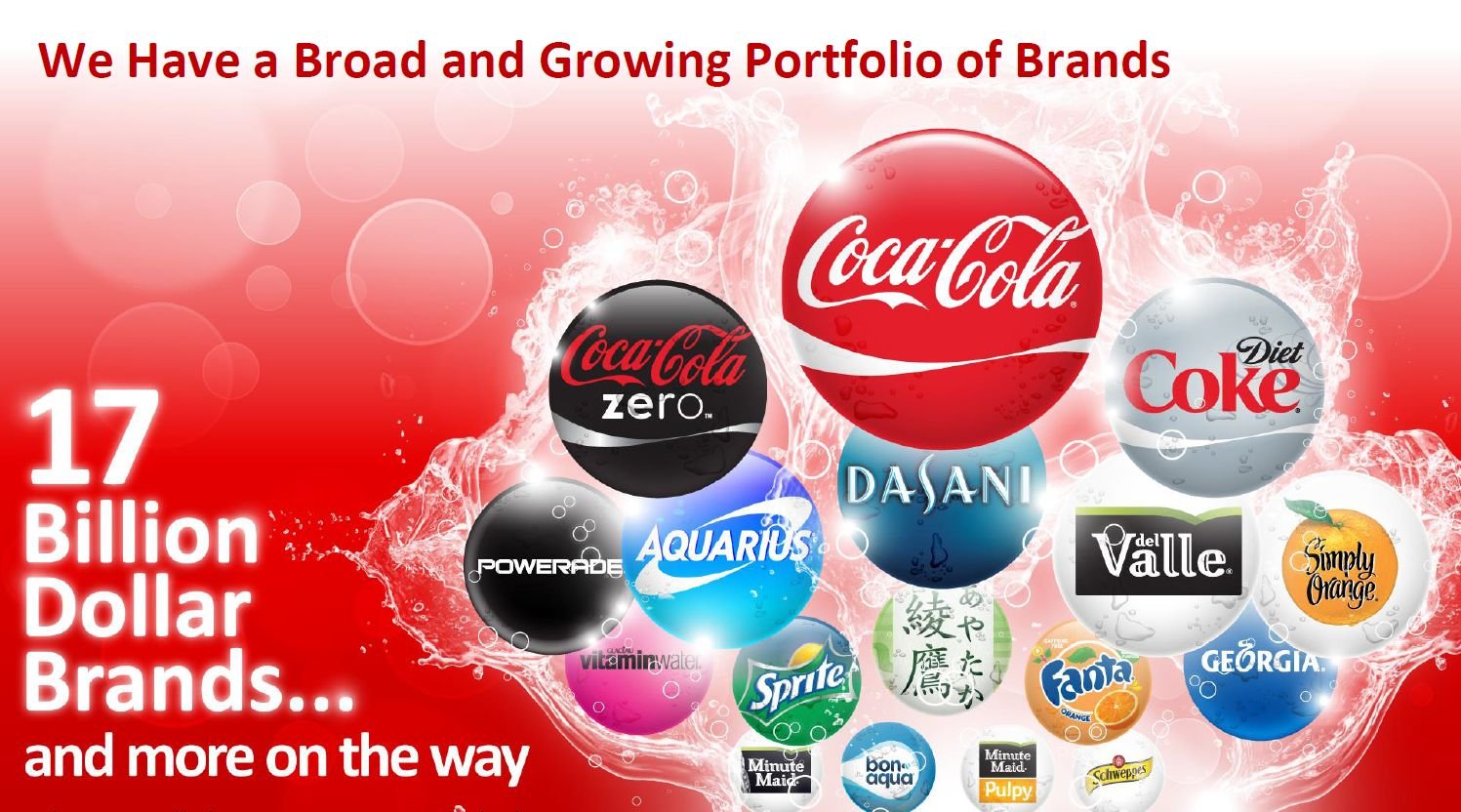
Source: Coca-Cola.
Both Coca-Cola (KO 0.18%) and rival PepsiCo (PEP 0.81%) have been hit by weak soda sales lately, as consumers in developed countries move toward healthier alternatives. But Coke is still generating solid growth in emerging markets, and product innovation in several still beverage categories offers promising prospects for the company over the long term.
Industry headwinds
Worldwide soda volume was down by 1% during the first quarter of 2014 for Coca-Cola. The shift in the Easter holiday from the first quarter in 2013 to the second quarter in 2014 was partially responsible for the decline, but the fact remains that carbonated drinks sales have been under considerable pressure, particularly in big markets such as the U.S.
Regular Coca-Cola sales have been steadily declining in the U.S. in recent years due to concerns over calories and other health factors, and Diet Coke is also facing considerable criticism regarding artificial sweeteners such as aspartame.

Source: Coca-Cola.
PepsiCo is scheduled to report first-quarter earnings on Thursday, and it will be interesting to see how Coca-Cola's main competitor is doing in the sodas segment. Data from the last several quarters, though, already confirms that Pepsi also faces considerable headwinds in carbonated drinks.
Pepsi reported a decline of 1% in organic beverage revenue in the Americas region for 2013, as rising average prices were not enough to compensate for the 3% decrease in volume.
PepsiCo has turned to real sugar as a replacement for high-fructose corn syrup. The company is scheduled in June to launch "Pepsi Made With Real Sugar," as well as limited editions of "Made With Real Sugar" Pepsi Vanilla and Pepsi Wild Cherry.
It's good to see companies looking for creative ways to find a solution to declining soda volumes. However, sugar does not have the best reputation when it comes to health, so such moves will hardly be enough to reverse the trend when it comes to health-conscious consumers' attitude toward soda.
Refreshing opportunities
Even if Coca-Cola faces considerable challenges in adapting to changing consumer habits, that doesn´t mean the soft drinks giant is without growth opportunities. On the contrary, international expansion and product innovation are two promising growth drivers for Coca-Cola in the years ahead.
China was a particularly strong market for the company during the first quarter of 2014: Beverage volume grew by an impressive 12% from the prior year, while overall sparkling drinks volume expanded by 6% and brand Coke grew by 3%.
Marketing investments during the Winter Olympics in Sochi produced solid results in Russia, where volume of sparkling beverages grew by 7% during the quarter and brand Coca-Cola volume increased by 9%. This was the 17th consecutive quarter of growth for the Coke brand in Russia.
Volume in Brazil increased by 4% during the quarter, and management is optimistic about performance there as Coca-Cola is putting a lot of marketing muscle behind this summer's soccer World Cup in the country

Source: Coca-Cola.
In addition, still beverage brands account for approximately one-quarter of the company's total global volume. Coca-Cola owns 11 brands in the noncarbonated category that generate more than $1 billion in global sales annually; these include widely recognized names such as Minute Maid, Powerade, and Dasani.
Still beverage volume grew by 8% in the first quarter of 2014, and the company gained both volume and value share in the category.
Coca-Cola has been rapidly expanding into juices and juice drinks. Management is encouraged by the success of dynamic brands such as Simply Orange, which grew in the double digits in North America during the last quarter, and Minute Maid Pulpy, which grew 8% in China during the period. This was Coca-Cola's ninth-consecutive quarter of value share gains in juices and juice drinks.
Coca-Cola's global tea portfolio grew 4% during the quarter, and the company delivered double-digit growth across the Honest Tea and Gold Peak Tea brands in North America, as well as Ayataka and Sokenbicha in Asia.
All in all, still beverage drinks offer considerable potential for growth in the coming years, both in the U.S. and international markets. While developed countries will probably continue generating lackluster volume in carbonated drinks, global perspectives for growth are much more encouraging for the category.
Foolish takeaway
Falling soda volumes in the U.S. represent a considerable challenge for Coca-Cola, but the company has the brand presence and overall competitive strength to replace sodas with healthier alternatives. In international markets, both carbonated and still drinks offer considerable room for growth in the long term. Coca-Cola looks well positioned to continue delivering sparkling performance for investors in the years ahead.







